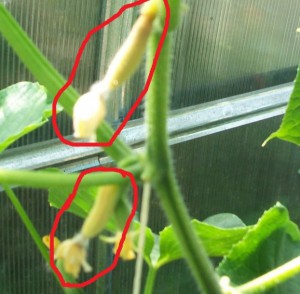 Preparation of cucumber seeds for sowing in greenhouse
Preparation of cucumber seeds for sowing in greenhouse
Some firms ("Gavrish") are thermal processing of seeds for the destruction of viral infection, so their sorting in water or in the solid salt is not recommended. Foreign firms mainly etched the seeds supplied to us, and they are not required to handle them.
Before sowing unprocessed seeds, seed trees against Mushroom and bacterial infections, such as fusariosis, verticillosis, ascohithosis, and other diseases. The most promising and effective - microbiological preparation of extraxol, which not only removes a seed infection, but also enriches the seed with useful microbiota and for a long time protects the young seedlings from root rot, etc.
Why zhilty zeezazi from cucumber?
Those who grow cucumbers in a greenhouse are quite often faced with similar problems - on the plants turn yellow and get the ovary.
And first get the flower petals, and then the wounded itself. Most often, the cause of rotting of the cucumber cucumber is bacteriosis, the spread of which contributes to the increased humidity of the soil and air, as well as the high density of plants in the greenhouse. However, there may be other reasons associated with non-compliance with agrotechnics and non-fulfillment of optimal conditions for normal growth and plant development:
- sharp air and soil temperature drops;
- incorrect formation of plants;
- lack of trace elements, etc.
Cucumber can not be grown in permanent culture, i.e., annually at the same place. Accumulated in the previous year (years) infection may cause illness this season. A responsible moment when growing cucumber in a greenhouse - watering. Plants need to be watered regularly and often (especially during fruiting), and only warm water: in cold weather - in the afternoon, in the sunny - in the morning, and a refreshing watering should be used on a hot day.
If the tie cucumber is starting to be rotated (most often it happens in crude cold weather), it is necessary to carefully remove the outflower flowers, and the cutting place to be treated with a solution of potassium mangartaged solution. For the prevention of bacteriosis of the plant, it can be sprayed with 1% burglar liquid or a 0.4% copper chlorocycy suspension.
It is even better to perform a spraying of cucumbers with an extracell with adding 1 ml of Novosyl. It cannot be allowed that on one plant simultaneously develops more than 20-25 barriers. Greenhouse cucumbers grow very quickly. Some varieties and especially cucumber hybrids, for example, may have on one plant at the same time more than 150 barbells.
All the newly formed shoots, even with female flowers, you need to delete on time, because young wounds are delayed by the development of forming Zelents, and often grow small, non-universal fruits that quickly yellow and deteriorate. The reason for the dedication of buds, flowers and wounds may be a lack of trace elements. At the same time, the productivity of plants is reduced to 50%. The deficit of trace elements in greenhouses is especially felt, where mineral fertilizers (nitrogen, phosphoric, potash) are constantly introduced. Therefore, systematically (once in 3-4 years) It is necessary to bring microfertilizations containing boring, copper, manganese, zinc, molybdenum, etc. With a shortage of trace elements, highly concentrated drugs produced in the form of microgranul (rexoline, brecxyl) can be used, as well as to make fertilizers of Kemira Combi and Kemira Hydro, Cucumber Aquarin, Master, Crystal, Terraflex containing NPK with a complex of trace elements. Replenish the lack of trace elements can be introduced into the soil of wood ash (300 g / m2). This is a complex bezazotic fertilizer containing potassium, phosphorus, silicon, lime, iron, magnesium, boron, manganese, zinc, molybdenum, cesium. However, it must be remembered that it is impossible to mix ash with nitrogen fertilizers (ammonium nitrate, ammonium sulfate), which includes ammonium nitrogen. Under the influence of Potasha contained in ash, ammonium is allocated from these fertilizers, which goes into a gaseous state (ammonia) and disappears without use.
In addition, the reason for the yellowing of cucumbers in the greenhouse may be poor fertilization. Since the pollen of the flowers of cucumbers sticky, they are pollinated by insects, mostly bees. In small greenhouses, pollinate plants can be manually, and in large you need to put hives with bees, since the manual pollination of flowers requires very large labor costs and sharply reduces the quality and amount of cucumbers. If there is no possibility to put in the greenhouses of the hives, it is possible to lure bees, feeding with sugar syrup with the addition of 5% yeast (yeast with syrup to avoid fermentation boiling). Syrup is prepared from 2 parts of the sugar and 1 part of the water and poured daily into the feeders to 100-200 g. In order to give the sirosis of the aroma of cucumbers, the cooled mass is put freshly-insulated male flowers so that bees can move around them and not sink in syrup. It is very important to remember that the pollination of cucumbers takes place from 6 to 10 in the morning, it is at this time that it is necessary to ensure maximum access of bees to plants (open framugs, doors, etc.).
From agrotechnical techniques that contribute to the best beekiewicer, practice non-thickened landing, providing good illumination of flowers and better access to them bees, as well as mace elements, especially born magnesium fertilizers, which contribute to an increase in the selection of nectar with flowers. Excellent results for pollination and preservation of plants gives an aerosol feeding, which is formed when burning the mineral complex "Greenhouse". Recently, many parthenocarpic hybrids (meringa, courage, Masha, Hermann, Krispina F1, Pasaden F1, Pazamona F1, Pasalimo F1, Pasamalim F1, Pasalimo F1, Marinda F1, Natasha F1, Athena F1, etc.) that can develop normal wounds without fertilization, and therefore there is no need to take care of their pollination.
These are the hybrids of the root type, the fruits without bitterness and are not yellowing for a long time, have good salting qualities.

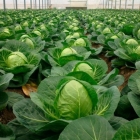
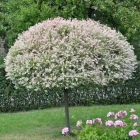
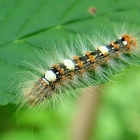
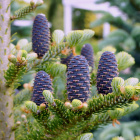
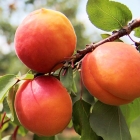
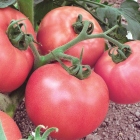


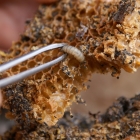
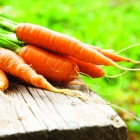

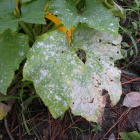
 Start a discussion ...
Start a discussion ...